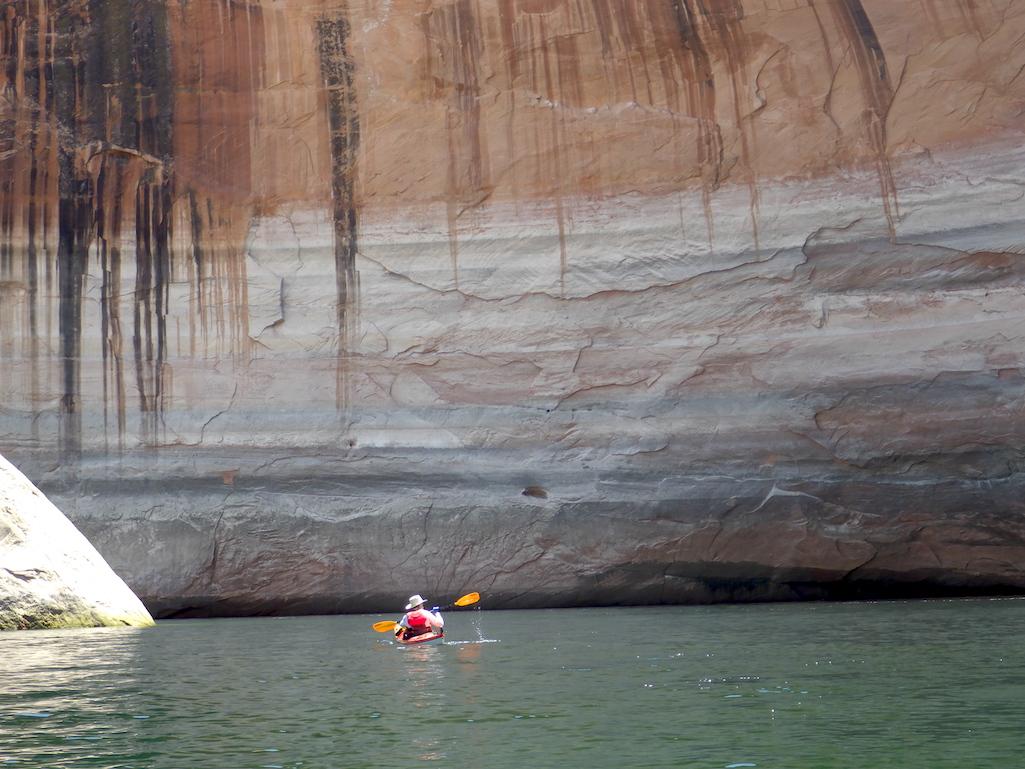
New research concludes that the Colorado River Basin lost 10 trillion gallons of water, an amount roughly equivalent to the capacity of Lake Mead, to climate change from 2000-2021. While last winter's tremendous snowfall helped Lake Powell (above, from 2021) recover somewhat, it still is far below full pool/Kurt Repanshek file
Climate-change is being blamed for the loss of roughly 10 trillion gallons of water — an amount roughly equal to the capacity of Lake Mead — from the Colorado River Basin from 2000 to 2021. With climate change deepening, that calculation, made by researchers at UCLA, portends increasingly dire times for the river basin, and the National Park System units along its path.
Issues already have developed due to climate-change's impacts on the Colorado River. In a series of stories the National Parks Traveler has documented impacts to Canyonlands National Park, reported on less water and more invasive species at Glen Canyon National Recreation Area, and discussed growing impacts to Grand Canyon National Park with Superintendent Ed Keable and his staff.
The research led by UCLA's Benjamin Bass, who specializes in hydrological modeling, says the Colorado River Basin lost more than 10 trillion gallons of water due to climate-change effects during the first two decades of the 21st century.
"The significance of the findings cannot be overlooked, as the study serves as a wake-up call to the severe impact of climate change on the availability of water in the Colorado River Basin," said a release announcing the findings. "The removal of such a vast amount of water from the basin during the recent megadrought, equivalent to the volume of Lake Mead itself, emphasizes the urgent need to address the consequences of climate change that we are witnessing in the present day."
The long-running drought that's had the Southwest in a chokehold has brought a number of statistics to national consciousness: The Colorado Basin touches seven states and provides water for roughly 40 million people and slakes the thirst of agricultural areas that help feed the nation. It also has dropped the Lake Powell and Lake Mead reservoirs to critical levels, requiring the National Park Service to extend boat launch ramps at both Lake Mead National Recreation Area and Glen Canyon National Recreation Area. At Lake Mead, many concrete ramps are inoperable. At Lake Powell, a majority of ramps are open, though a number are inoperable due to low water levels.
The UCLA researchers came to some unsettling findings:
The model's findings revealed that between 1880 and 2021, the temperature in the Colorado River Basin rose by approximately 1.5 degrees Celsius (2.7 degrees Fahrenheit) due to human-induced climate change. This temperature increase resulted in a 10.3% reduction in runoff under current conditions. However, if the effects of vegetation were not considered, the water loss under present-day conditions would have been closer to 13%. This highlights the crucial role of including vegetation processes in water modeling, as emphasized by the study's authors.
This decline in runoff, amounting to a 10.3% reduction, reached its peak during the historical drought period spanning from 2000 to 2021. Throughout this drought, the cumulative volume of lost runoff water was approximately equal to the total capacity of Lake Mead, the largest reservoir on the Colorado River.
The researchers also made a significant discovery, finding that the snow-covered regions of the basin, which are typically abundant with water during winter, are experiencing water loss at a rate twice as fast as the usually snowless areas. This transition is raising immediate concerns among water managers because these snowpack regions play a disproportionately large role in the basin's water supply. Although they constitute only about one-third of the entire basin, they contribute to about two-thirds of its total runoff.
"Based on these reductions in runoff, the Colorado Basin's first water shortage likely would not have been required in 2021 without anthropogenic warming. Without reducing greenhouse gas emissions, runoff reductions will likely continue to occur as temperature increases..." the researchers concluded.
You can find their study here.


